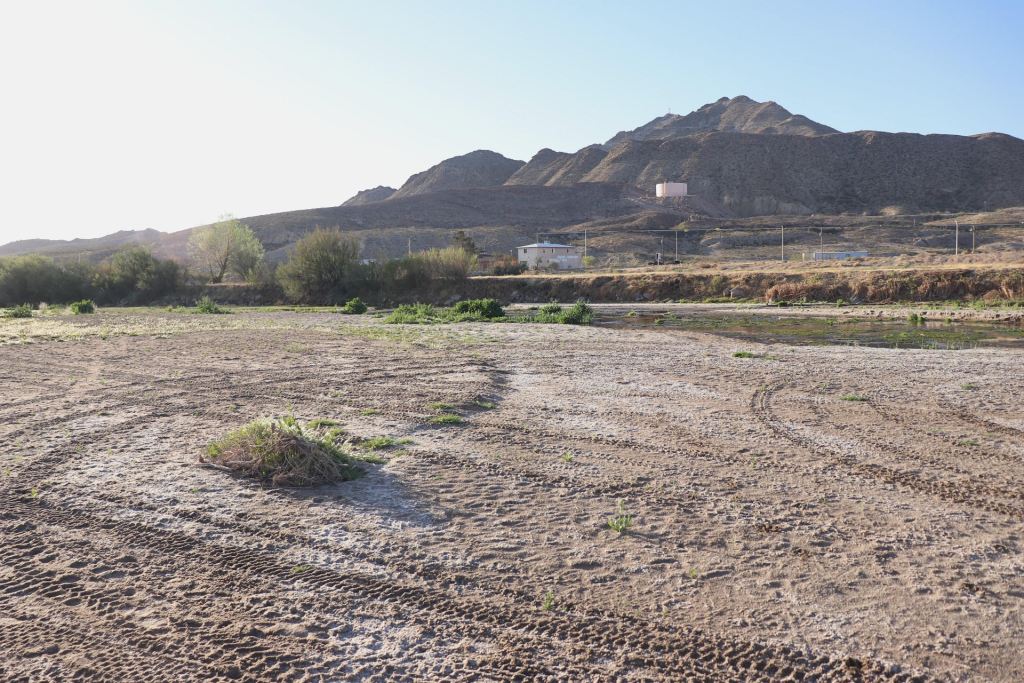Region braces for deeper drought, less Rio Grande water for farming
Another spring, the same dry riverbed.
In previous years, water would begin to flow in the Rio Grande in springtime, released from storage from Elephant Butte Reservoir in New Mexico, and pour into fields and ditches for cotton, pecans, chiles and other crops.
Instead, once again, the riverbed remains sandy and bare, and Elephant Butte is at just 12% of its capacity, awaiting snowmelt from the mountains in Colorado and Northern New Mexico.

The U.S. Drought Monitor map currently shows about half of El Paso county remains “abnormally dry,” but experts said Tuesday they expect hotter temperatures and little rain to desiccate the Western United States -- 90% of which is already in a drought.
Local irrigation managers for New Mexico, Far West Texas and Mexico anticipate a short, small season starting in June, despite the predicted hotter temperatures. A formal announcement with the exact numbers for irrigation will be released from the U.S. Bureau of Reclamation later this month, Mary Carlson, a spokeswoman for the agency said.
“There is some snowpack in the northern mountains this year so it's looking like there will be more of a spring runoff peak than last year, which also means more inflow to Elephant Butte and Caballo (reservoirs),” Carlson wrote in an email.
Snowpacks in New Mexico were boosted by winter storms, and a late March snow, as records showed snowpacks at 100% of median, or higher, in New Mexico. But even good years are not replenishing the river as well as before. That threatens the Rio Grande, which relies on snowmelt for three-fourths of its water.
Hotter temperatures dry out soils, and that can absorb as much as 20% of water before it hits the riverbed, meaning less water to flow downstream.

Scientists are unsure if the La Niña pattern governed by Pacific Ocean temperatures that worsen cyclical drought by warming weather and lowering precipitation in the Southwest will continue into next year.
“Hopefully we will not go into a third consecutive La Niña pattern, which would obviously not be good for the Southwest overall,” said Dave Simeral, a research climatologist at Desert Research Institute, during a recent drought briefing.
Locally, regional farmers must wait for water just as planting season opens for cotton.
Projections show El Paso farmers are expecting only 18 inches of water per acre, rather than the full 48 inches, said Jesús Reyes, the manager for El Paso County Water Improvement District No. 1.
“For cotton farmers, the irrigation water is not coming until June; that means a lot of land is going to be laid out, fallowed,” Reyes said.
New Mexico farmers face a grimmer picture, said Elephant Butte Irrigation District Manager Gary Esslinger, estimating only three or four inches of water per acre, total.
“That’s good for about a 30-day run,” he said, adding that he hoped for another historic monsoon season.
Last year's short-term drought impacts were lessened by historic monsoons that caused flooding across El Paso, but a good rain doesn’t last. The 2021 monsoon season dropped almost 9 inches of rain in El Paso, making it the second wettest year ever.
However, the increase in rainfall can make things tougher, as the growth that sprung up from last year's heavy rains is this year's fuel for fires.
El Paso County has already had seven red flag warnings -- warning of extreme fire danger this year, said Connor Dennhardt, a meteorologist with the National Weather Service office in Santa Teresa, New Mexico.
“We’re right in the heat of the season,” he said. “The end of spring combines to prolonged dryness, winds continue to stay breezy, all which contributes to fire danger.”
Fire season will continue until the monsoon rains, anticipated sometime in late June or early July. Dennhardt warned people in El Paso to prevent any ignition of brush, saying that housefires or out of control campfires are dangerous to homes.
On Monday more than 50 firefighters fought a brush fire that threatened homes on El Paso’s Westside, which is still under investigation, according to the El Paso Fire Department.
“These things can get out of hand quickly, since fuels are plentiful and primed for wildfires to start,” Dennhardt said.
This article first appeared on El Paso Matters and is republished here under a Creative Commons license.![]()
